We are a participant in the Amazon Services LLC Associates Program, an affiliate advertising program designed to provide a means for sites to earn fees by linking to Amazon.com.

Mylee is a certified child sleep consultant and child behavior consultant who has helped families worldwide. Originally a social worker from Australia, she has since relocated to New York, where she now does speaking engagements, group seminars, virtual consultations, and in-home consultations. She was named one of the Top Sleep Consultants in the U.S. by Tuck Sleep.
Thanks so much for doing this interview, Mylee!
Let’s talk about baby sleep safety. I think we hear so much about what isn’t safe, what we can’t use, what’s not recommended… So if I have another kid, what can I use? What can she sleep in? What’s safe?
The recommendations are really pretty simple. Babies must be placed on their backs in a crib or a bassinet that has a firm mattress with a fitted sheet. That’s generally what you can use as a sleep surface.
There are lots of things that market themselves to be for sleep, but there are only three approved terms for sleep surfaces: bassinet, crib, and play yard. Loungers, sleepers, and nappers are not approved for sleep. These companies give their products names that sound sleep-related, and then they add a picture of a baby sleeping in it. The consumer then naturally assumes these products are safe for sleep.
I often see pictures on social media of babies sleeping in the Rock ‘n Play or the DockATot, sometimes even shared from the company’s account. But if you go and look at the product instructions, they’re technically telling you that you shouldn’t use the product for sleep, or they’re saying something to the effect of “ you should make safe choices.”
But a mom desperate for her baby to sleep reads that and thinks it’s a safe sleep product.
Health Canada has advised parents that DockATots and similar items put babies at risk of suffocation, and the FDA advises parents not to use sleep positioners.
We had the Fisher-Price Rock ‘n Play Sleeper and the Ingenuity Rock ‘n Soothe Sleeper, both of which have since been recalled. Our pediatrician was fine with us using them, and we thought the word “sleeper” meant they were safe!
If something says “bassinet,” “crib,” or “play yard,” does that mean it’s safe for sleep?
Generally speaking, bassinet, crib, and play yard are the approved terms for safe sleep products.
If you’re ever wondering about a product, you can check out the Consumer Product Safety Commission. They’re the ones who approve all products and set standards. If you ever want to find out if a toy or car seat is safe, this is where you’d go for information.
I was looking at the website last night and saw a new recall for this sleeper accessory.
Fisher-Price has issued a recall for an inclined sleeper accessory that attaches to the top of a play yard. Consumer Reports has called for the CPSC and companies to remove all inclined sleep products from the market and out of people’s homes.
They have standards for everything, even those bedside sleepers, and co-sleepers.
But for bedside sleepers and the ones that are supposed to go in the bed with you, there’s actually very little research about if they’re safe for sleep. If you put something on the side of a bed (co-sleeper), what could happen? Those products are usually designed for easy access to the baby, so the sturdiness of the sides could be concerning.

It’s complicated for the average person to figure out what’s safe, especially when there are so many products that don’t have enough research behind them. Consumers end up making poor choices because we just don’t know what to do.
Brands like Dock-A-Tot and Ingenuity are not advertising appropriately, which is quite scary. They’re advertising in a misleading way and burying useful information.
I was even reading an article about sleep sacks the other day, and apparently, some of them technically don’t have to be fire retardant. Because of the name of this particular product, it isn’t technically a sleep sack, so it doesn’t have to meet the same regulatory standards. But it’s advertised in a way that the consumer could easily assume it’s a sleep sack.
Mylee’s recommended sleep products can be found here.
So let’s say I’m a new mom. Thinking about the first four to five months of sleep with a newborn, what would be ideal for baby sleep safety?
The baby should be in your room in their own crib or bassinet. Given that you’ll be feeding the baby every few hours, he/she should be close to you. The crib should be totally free of toys, pillows, blankets, and bumpers. All that should be in the bed is a mattress and a fitted sheet.
And a pacifier, if your baby takes one. The American Academy of Pediatrics actually says that pacifiers could help reduce the risk of SIDS, although there’s not enough research yet to determine why.
A baby is supposed to room share with you for the first six months of life, at least, but the general recommendation is, ideally, for an entire year. In Australia, they recommend a year. Different countries have different recommendations, but the AAP says at least 6 months, if not a year.
In an ideal world, the baby sleeps in your room for a year. How do you deal with situations where the circumstances aren’t ideal? For example, my therapist encouraged me to move my baby to her own room at two months old because her noises kept me from getting any sleep.
That’s something I’m starting to see more and more. There’s been some research and articles claiming that some babies sleep better when they’re not next to their parents. Sometimes parents are accidentally waking up the baby, or the baby smells his mother’s milk and wakes more frequently. And babies are loud – their constant grunts can make sleep impossible for moms.
When I’m working with a family, I have to let them know about the safe sleep guidelines. That’s important. But if I find that the parent I’m working with has already transitioned their baby out of the room, so be it.
Ideally, follow the recommendations, but you’ve got to do what works for you. If you’re both going to get better sleep in separate rooms, that’s your own decision. You’d need to make sure to still follow all sleep safety recommendations, and you should add blackout curtains, a noise machine, and a video monitor.
Some parents think heart rate monitors are a necessity. You’ll see lots of people saying that it can save lives. But the thing you have to keep in mind is that there’s not enough evidence that they’re as good as they claim to be, or that they do save lives.
They can set off false alarms that have parents thinking something has gone wrong when it hasn’t. So yes, there might be times where it’s done a world of good, but there are probably other times where it’s not worked effectively. There’s no research to say that it dramatically improves the risk of SIDS. It’s another personal decision you have to make for your family. Are you going to be happy to have something that might go off accidentally?
I actually bought one for my older son, and we never installed it.
When I moved our daughter into her own room, it was really hard for me. I thought she would be lonely and need me, especially since she was usually up every three hours. And then she slept through the night for the first time.
With my first son, we used to wheel him into his room every night when he’d fall asleep, and then wheel him back into our bedroom when we went to bed. It got to a point where my husband said, “Why are we doing that? What is the point of wheeling him in and out? He might as well stay there.”
So at about three or four months old, my son was sleeping in his bedroom, because it just didn’t make sense to keep doing that. But then with my younger son, he slept in our bedroom until he was about 15 months. But that was because we wanted to make sure he wasn’t going to wake up his brother when they room-shared.
I understand the AAP recommendation on this, but everyone needs to decide what works best for them. Getting the best sleep possible is ideal.

What about the moms who say that their baby can only sleep in the same bed with them or on top of them? We know that you’re not supposed to fall asleep with your kid on the couch or on top or you, but what if that’s the only way to get some sleep?
I would hazard a guess that it’s unlikely that the baby actually does need that. It’s more likely that a bad habit has been formed, and with some help and support, they should be able to work through that. The baby needs to be sleeping in his crib or bassinet.
Even if for some reason that is the case, and the baby can’t sleep in their own bed, it can be really unsafe to be holding your baby.
When I was a social worker, I worked with a mom who had a baby in her bed and rolled on top of him. Sadly, that baby’s no longer with us.
I just read the other day about a woman who had her baby with her and her husband in bed. During the night she woke up and found that her husband had rolled on top of the baby in his sleep. Luckily they were able to revive the baby, but it could have been much worse.
Accidents don’t always happen. Many, many people will tell you that they’ve practiced bed-sharing with good results. But there are also people who shared a bed with their baby and things went wrong.
I’d urge parents to see if they can find an alternative arrangement and try to work on safe sleep. Sometimes newborns won’t settle, and it’s hard. But I would prefer a parent try to avoid holding their baby in unsafe positions. Having your baby in bed with you, especially when you’re exhausted, is a slippery slope.
Continued in Part 2 and Part 3, where we discuss bed-sharing, acid reflux, napping, swaddling, and more. If you need immediate assistance with child sleep or behavioral issues, visit Little Big Dreamers.
Posts You Might Like:

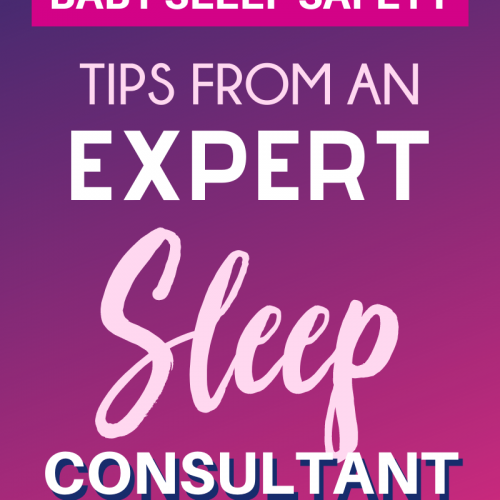





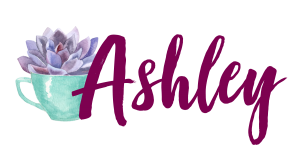
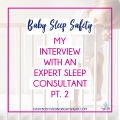
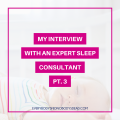
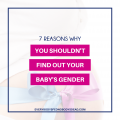
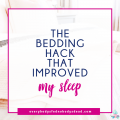
As with all things, be careful and follow the directions on any product. This isn’t a one size fits all situation. One thing may work and be totally safe for one while it may not for another. One more thing to think about is that not all babies are born only weighing 5 pounds. Mine were all 10 pounds and holding their heads up on the first day. I’m not as worried about sids with them as I would be a smaller child.
Interesting perspective! I think it’s always important to know the rules and guidelines so that you can make informed choices.
Such a good post! This covered a lot of important points when it comes to safe sleep!
Thank you! Hopefully it helps other moms. ❤️
Baby sleep safety is so important! Thanks for spreading awareness!
It definitely is! Thank you!
What a thorough interview! This is so so important to spread awareness of proper baby sleep environments! SIDS is real and does happen. Thank you for sharing!
It’s definitely important – thanks so much!
Love this! Baby sleep safety is so important. Thank you so much for sharing.
It definitely is important!